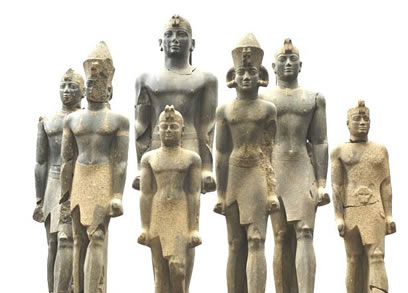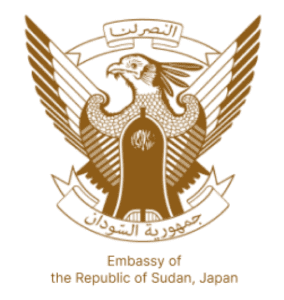History Of Sudan

The Black Pharaohs
Sudan has played a notable role in world history as early as the dawn of history. References to Nubia, the cradle of African/humankind civilization, were commonly made in ancient human documentation, including the works of Greek-Roman authors and Christian scriptures. Moreover, recent excavations in the Sudan showed a sophisticated and original culture, revealing that Nubia could have been the cradle of African civilization. This supports the conviction that has been building among scholars during the past twenty years that the Nubians were the creators of an ancient and impressive series of overlapping civilizations with a homegrown culture that may have been the most complex in all of Africa. Archaeologists have found, in recent discoveries, exquisite ceramic figurines, bowls, and funerary objects at sites that date from at least 8000 B.C. when people of a Neolithic culture had settled into a sedentary way of life in fortified mud-brick villages, where they supplemented hunting and fishing on the Nile with grain gathering and cattle herding. During the fifth millennium B.C., migrations from the drying Sahara brought Neolithic people into the Nile Valley along with agriculture.

Meroë
Around 590 BC, the Kushite court, to avoid Egyptian attacks, moved to a more secure location further south at Meroe near the Sixth Cataract. For centuries after that, the Meroitic kingdom developed independently of Egyptian influence and domination. During the height of its power in the 2nd and 3rd centuries B.C., Meroe extended over a region from the third cataract in the north to Soba, near present-day Khartoum, in the south. An Egyptian-influenced Pharaonic tradition persisted among a line of Meroe rulers who erected pyramids for their tombs. Objects and ruins of palaces, temples, and baths at Meroe attest to a centralized political system that employed artisans’ skills and commanded the labor of a large workforce. A well-managed irrigation system allowed the area to support a higher population density. By the first century B.C., the use of hieroglyphs gave way to a Meroitic script that adapted the Egyptian writing system to an indigenous, Nubian-related language spoken by the region’s people.








The Nubian Kingdoms
By the 6th century, three states, Nobatia, Muqurra, and Alawa, emerged as political and cultural heirs of the Meroitic kingdom. Around 540 AD, Nubia converted to Monophasic Christianity, which reopened channels to Mediterranean civilization, renewed Nubia’s cultural and ideological ties to Egypt, and encouraged literacy. The use of Greek in liturgy eventually gave way to the Nubian language, which was written using an indigenous alphabet that combined elements of the old Meroitic and Coptic scripts. The Christian Nubian kingdoms, which survived for many centuries, achieved their peak of prosperity and military power in the 9th and 10th centuries A.D.
Around the sixteenth century, due to the growing importance of Arabic culture and language, used as a medium for commerce, three Islamic kingdoms, with a feudally based economy, were created. The Kingdom of Sinnar (sometimes known as the Kingdom of the Funj) occupied the area of central Sudan, the Darfur Sultanate arose in the west, and the Taqali established a state in the Nuba Mountains before the country was reunified by the Ottoman forces between 1821 and 1881.






Modern Sudan
In 1881, imam (religious leader) Mohamed Ahmed Al-Mahdi, the father of modern Sudanese nationalism, led the Mahdist Revolution. Elmahdia (the Mahdist Revolution) can be regarded as the first nationalist movement of modern Sudan. The Mahdi’s forces were able to recuperate the capital, Khartoum, on 26 January 1885. But he died five months later, in June 1885. His successor, Khalifa Abdallahi Eltaayishi, reigned over the Sudan for all the periods that preceded the Anglo-Khedivial occupation (1885 – 1898).
During the British occupation, telegraph and rail lines were extended to link some parts of the country. Port Sudan opened in 1906, replacing Sawakin as the country’s principal outlet to the Red Sea. In 1911, a high-quality cotton scheme was established in Aljazeera, central Sudan, to feed Britain’s textile industry. An irrigation dam near Sinnar was completed in 1925. Aljazeera Scheme made cotton the mainstay of the country’s economy and turned the region into Sudan’s most densely populated area.
However, British authorities treated the three southern provinces, Equatorial, Upper Nile, and Bahr-algazal (today’s Republic of South Sudan), as separate regions. The Sudan was administered as two separate entities. In 1922, the British passed the Closed Districts Ordinance, stipulating permissions for the people of each part to travel to the other. Arabic language and practicing Islam were denied to South Sudanese by the British rulers. In contrast, western Christian missionaries were encouraged to work, operating schools and medical clinics and providing limited social services in southern Sudan. Roman Catholic, American, and Anglican missions maintained separate South influence areas to avoid competition. The southern provinces were prepared for integration with British East Africa.






Sudanese Nationalist Movement
Moderate Sudanese revolts, inspired by the Mahdist movement, marked the early years of British rule in the Sudan during 1900-1905. In 1921, Ali Abdelatif, a former army officer, founded the United Tribes Society that called for an independent Sudan. He later established the White Flag League, which organized demonstrations in Khartoum. Abdelatif’s arrest and subsequent exile in Egypt sparked a mutiny by a Sudanese army battalion. These events are recalled as the Revolution of 1924.
In 1942, the Graduates’ General Conference, a quasi-nationalist movement formed by educated Sudanese, presented the government with a memorandum that demanded a pledge of self-determination after the war to be preceded by the abolition of the Closed Districts Ordinance, an end to the separate curriculum in southern schools, and an increase in the number of Sudanese in the civil service.
In 1948, Britain authorized a partially elected consultative Legislative Assembly with an executive council consisting of five British and seven Sudanese members. In 1952, the Legislative Assembly negotiated the Self-Determination Agreement with Britain. The legislators then enacted a constitution providing a prime minister and council of ministers responsible for a bicameral parliament. The new Sudanese government would have responsibility in all areas except military and foreign affairs, which remained in the British governor general’s hands.






Independent Sudan
The transitional period toward independence began with the inauguration of the first parliament in 1954. On 19 December 1955, the Sudanese parliament unilaterally and unanimously declared Sudan’s independence. The British Government recognized the independence of Sudan on 1 January 1956.


